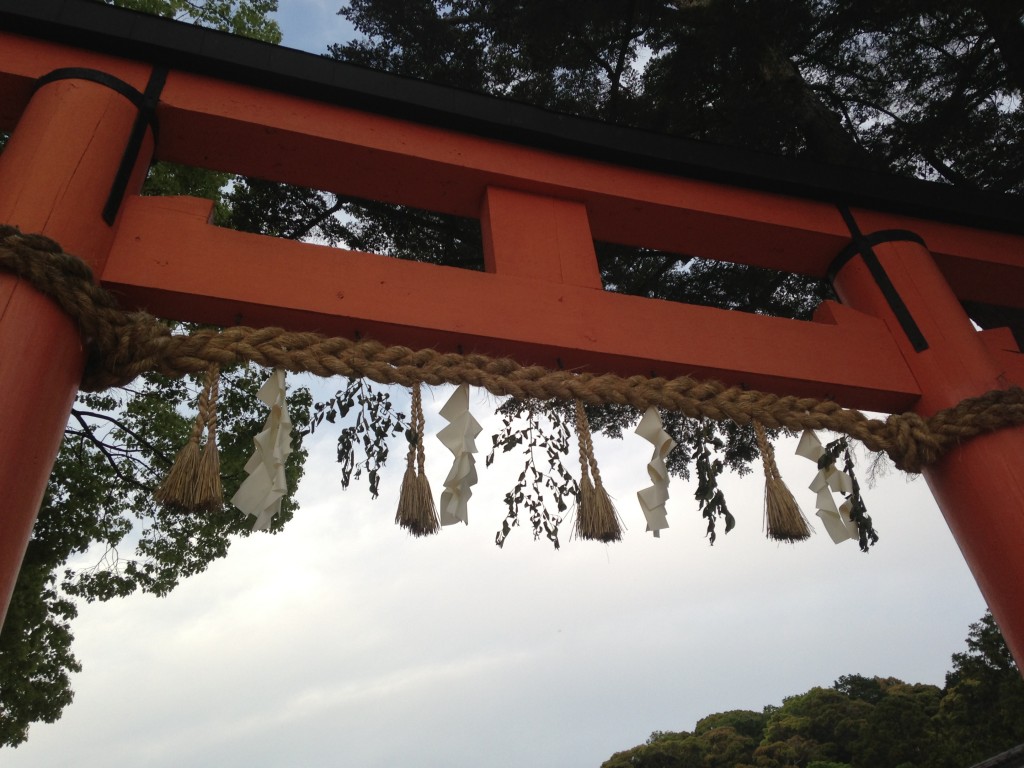
The inner torii in festive garb
Yesterday Kyoto’s Aoi Festival took place, and since I’ve seen the festival several times I thought I’d take a stroll this year around Kamigamo Shrine after the proceedings had ended. I was glad I did, for I found the shrine to be full of interest and activity, without the crowds that can make such occasions irksome. Though I only had my old iphone camera to hand, there was sufficient light left in the day for a few rough shots…
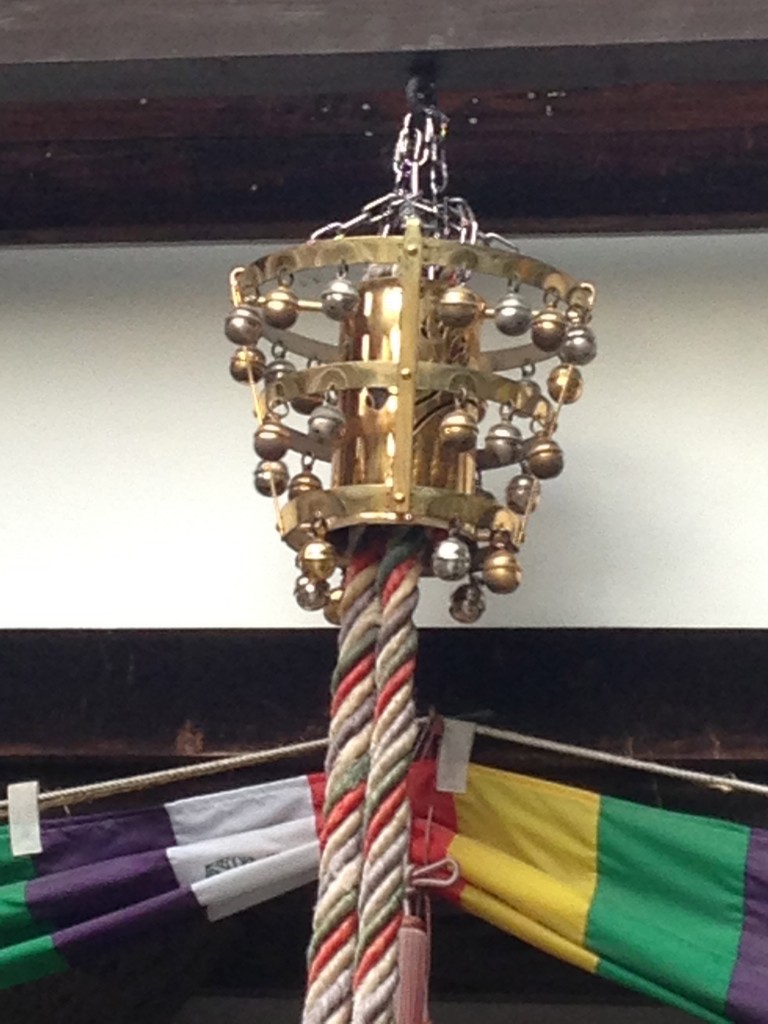
Attractive suzu bells were fixed to the top of the rope at the small enmusubi shrine. Notice the five colours on the banner representing the five elements.
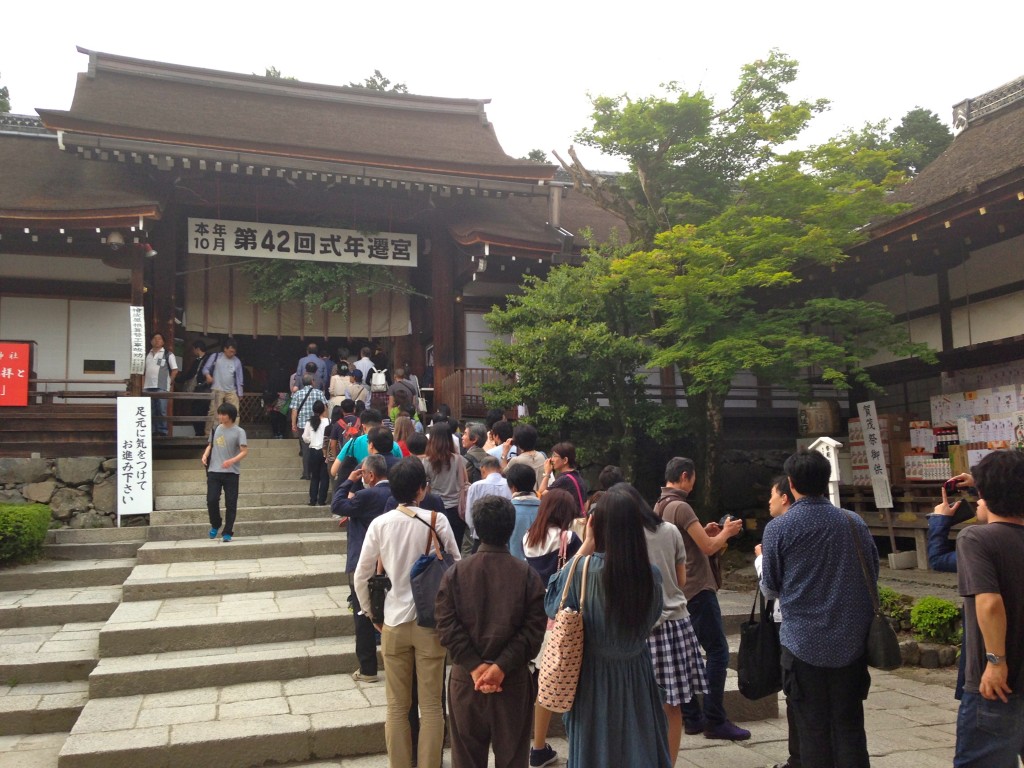
A long queue at the Honden (Worship Hall), which unusually was open for worship since the kami is temporarily absent during the shikinen sengu cycle of renewal due to be completed later this year.
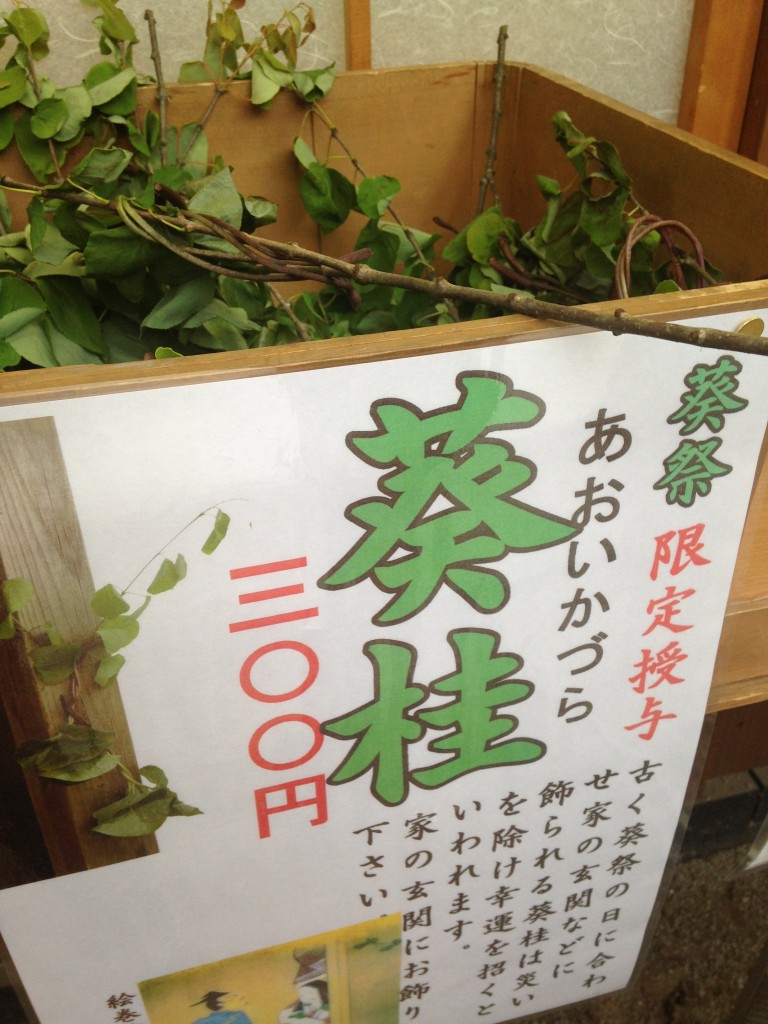
Sprigs of the aoi-katsura tree were on sale for ¥300 to fix at the entrance to homes as a protection against evil spirits and illness. At the bottom is a picture from a medieval scroll to show that this was ancient practice.
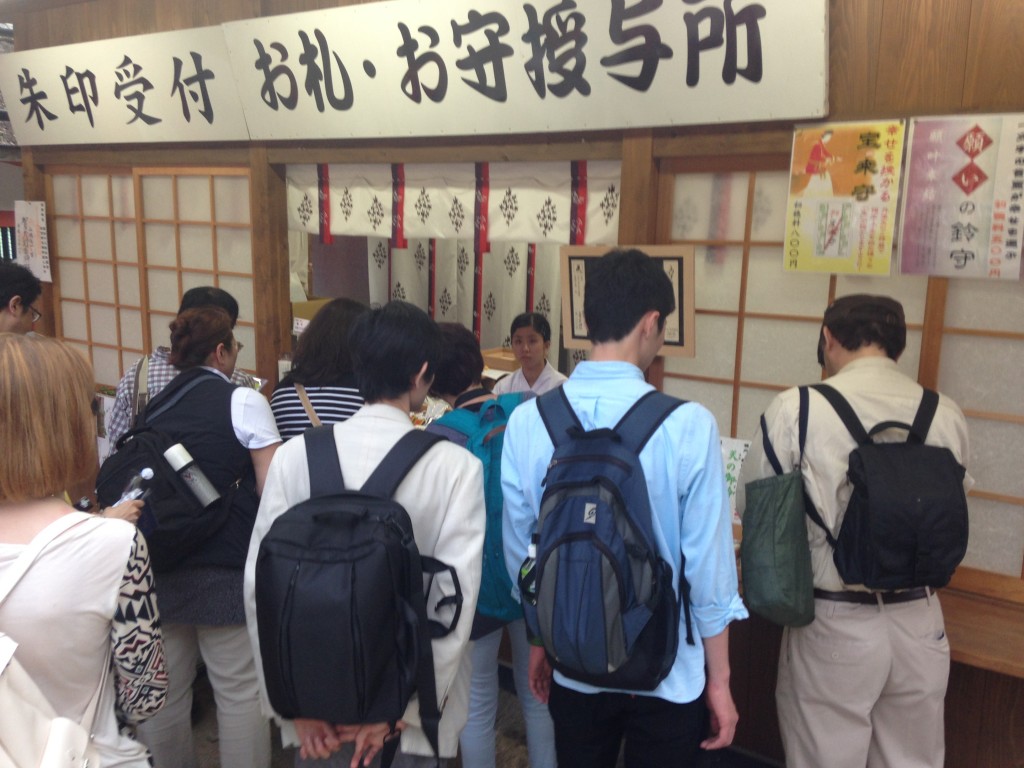
Even though the crowds had dispersed, the shrine office was still doing brisk business…
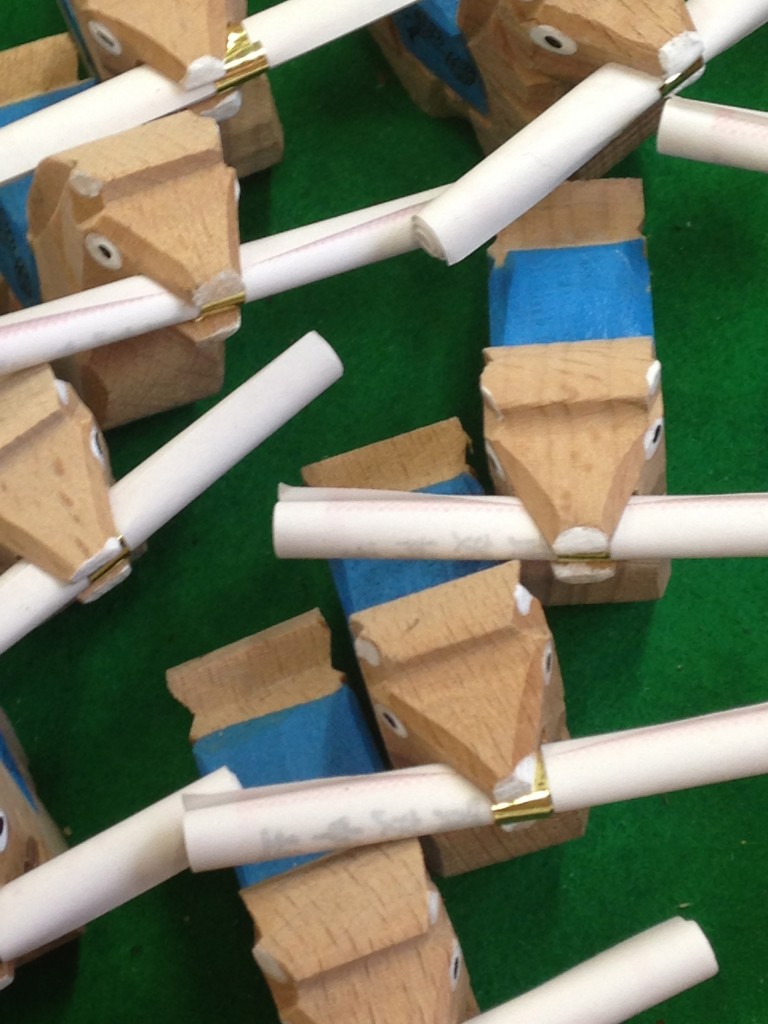
…. one of the most popular items were sheep omikuji fortune slips (this being the year of the sheep).
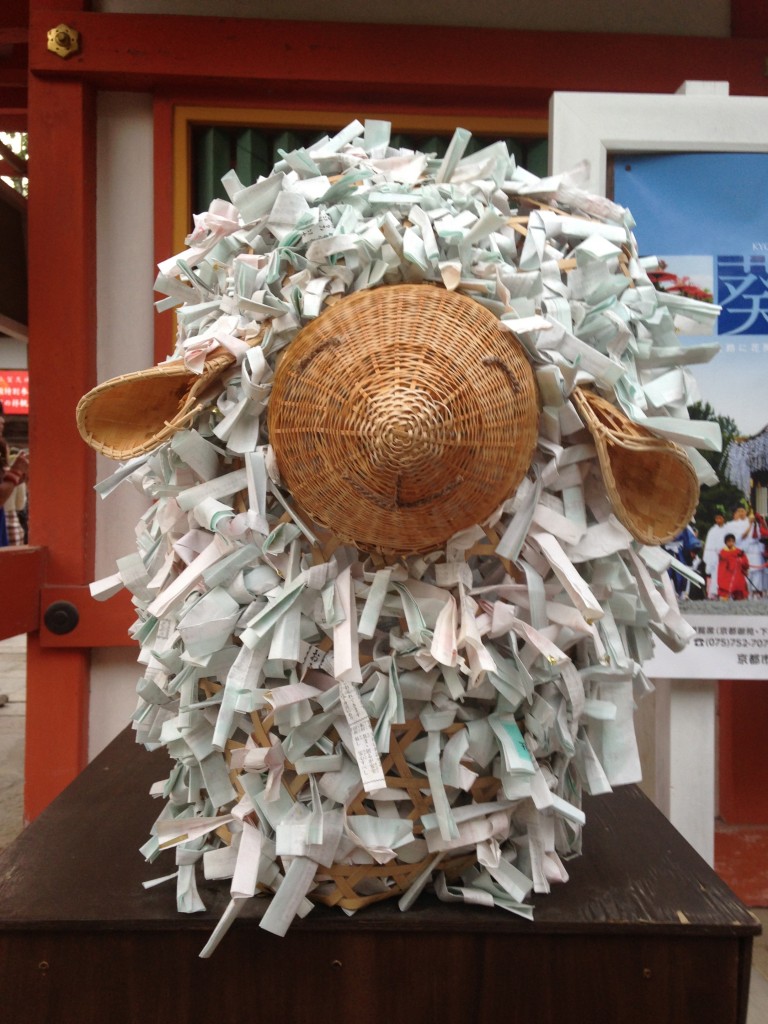
In creative fashion, the omikuji were tied up in an arrangement that with a bit of imagination can be seen to be a sheep.
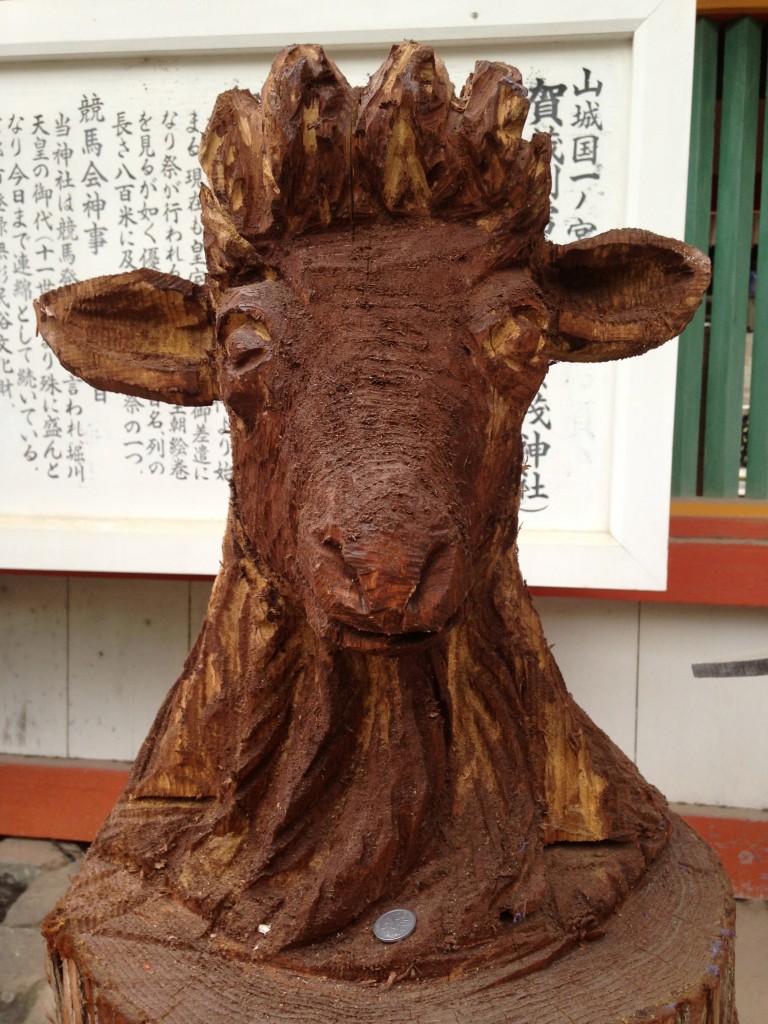
In fact, sheep seemed to be everywhere. This one, at the entrance to the compound, was carved by a chainsaw.
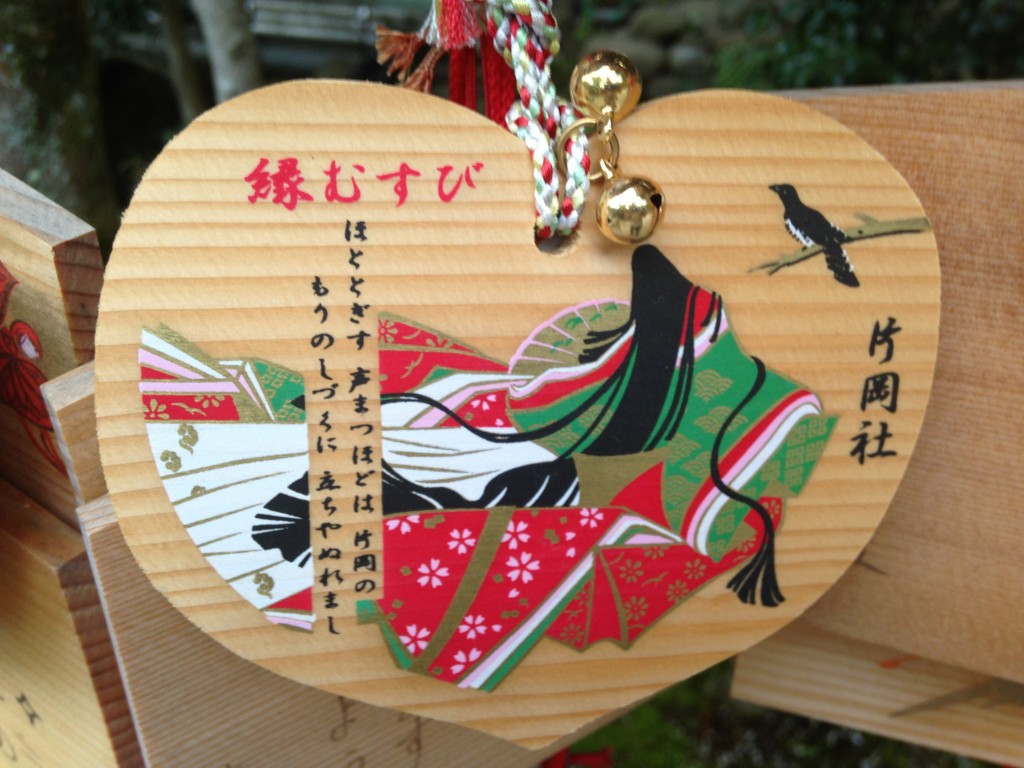
The shrine boasts a fine collection of newly printed ema. This heart-shaped one with a Heian-era court lady and short poem is for finding a good love relationship.
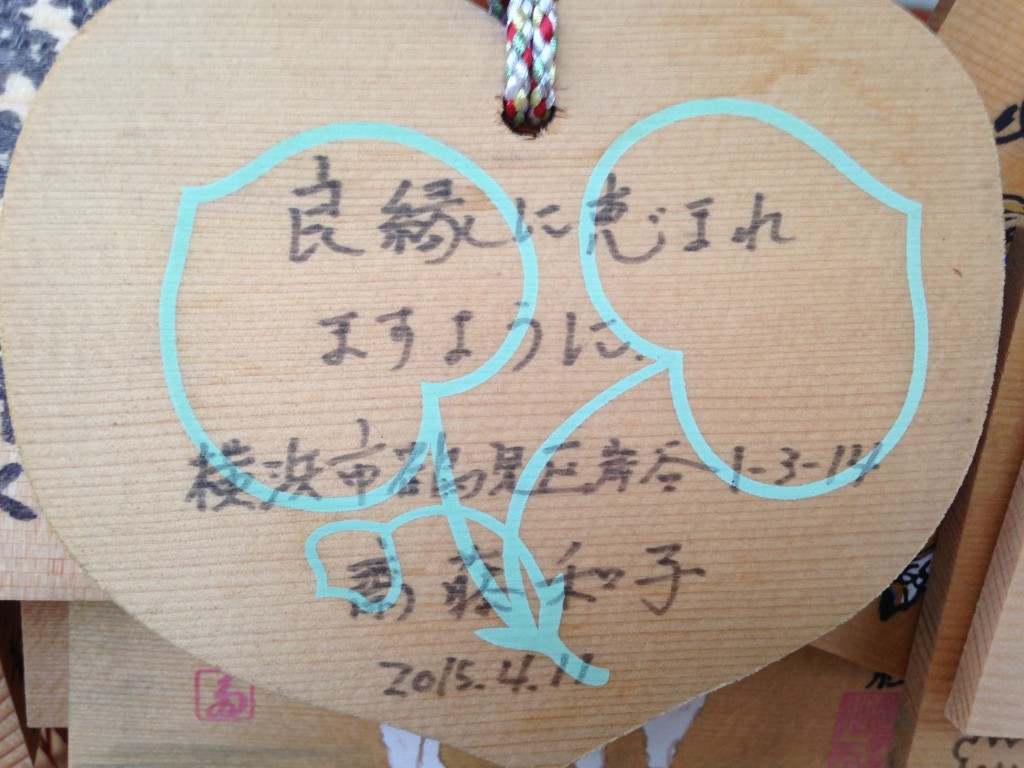
On the back are the two leaves of the shrine’s emblematic plant known as Futaba Aoi. This person, who gives her name and address, asks to find a good connection to someone.
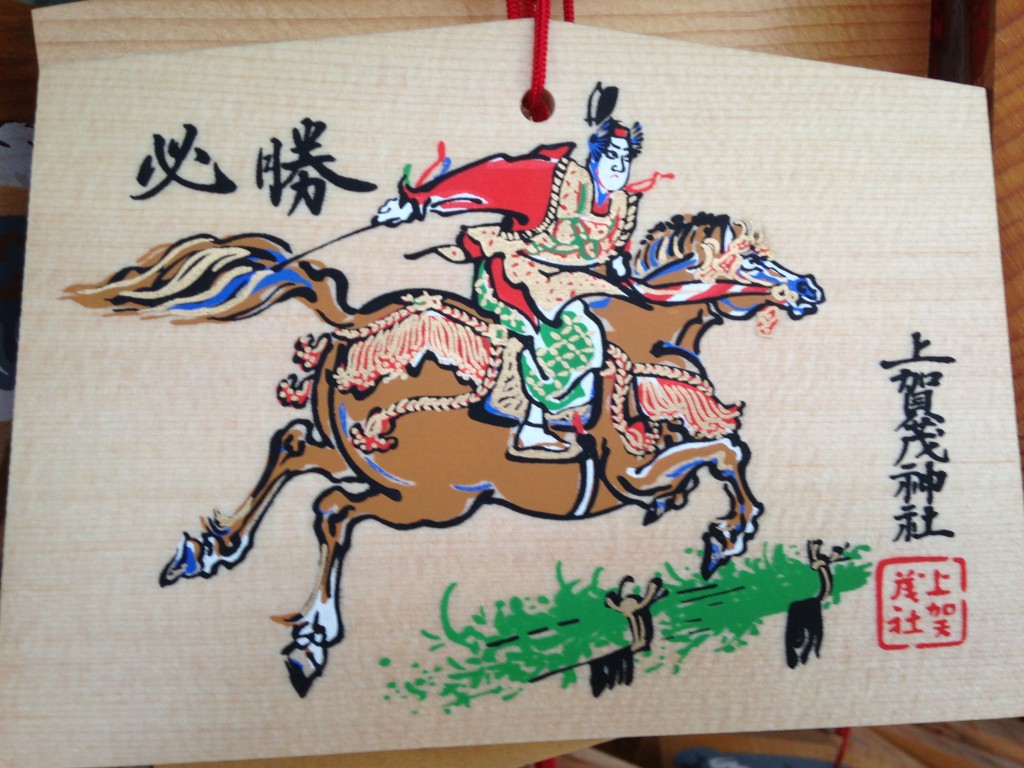
Another of the ema shows the display of horse skills that is one of the pre-events for the Aoi Festival
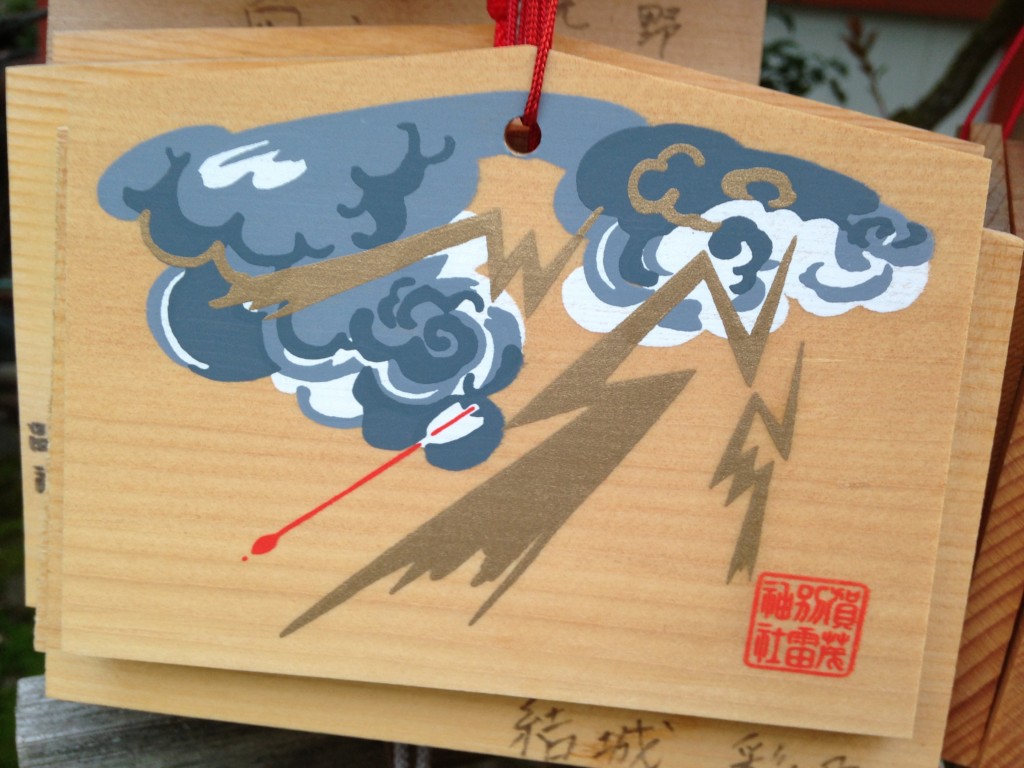
Here is displayed a manifestation of the shrine’s kami, Wakeikazuchi no mikoto, a thunder deity
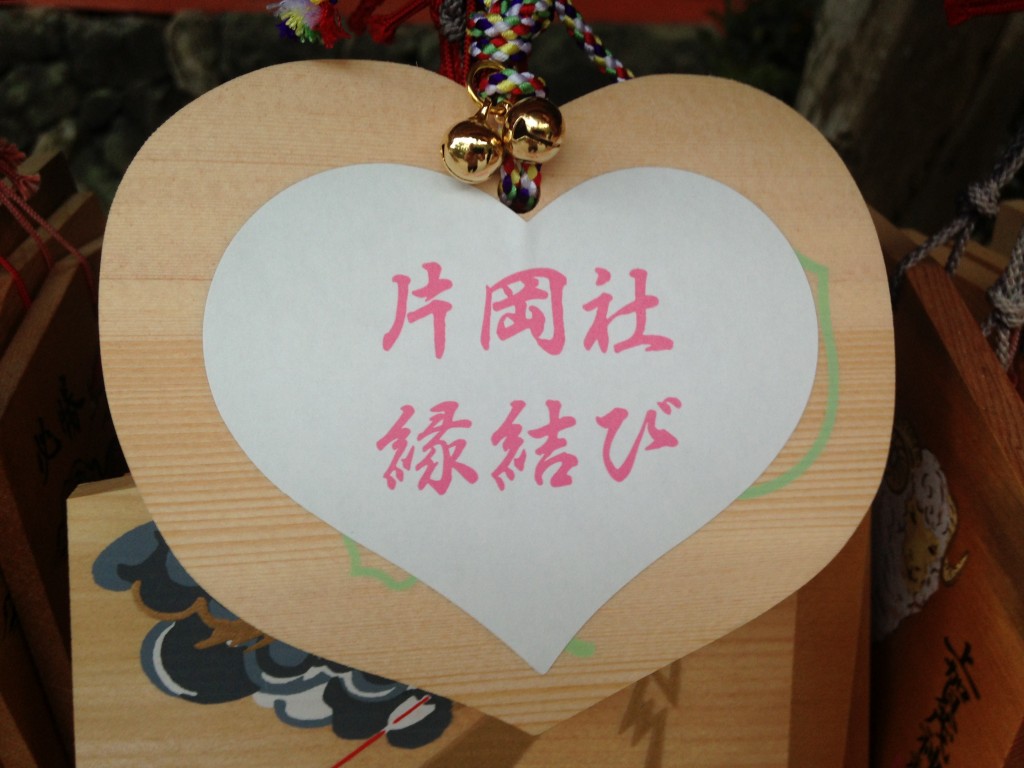
An example of the new-style privacy covering for people who don’t want others reading their love wishes. Unfortunately the innovation hasn’t been perfected yet for when it rains the covering strips off to reveal all…
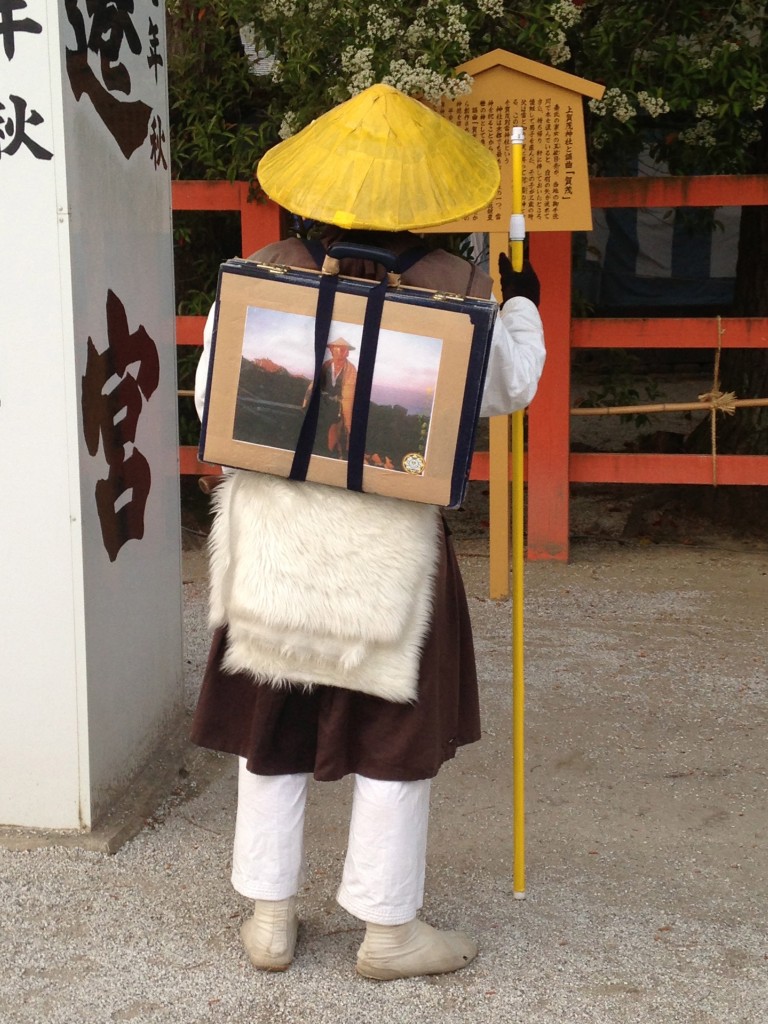
On the way out I came across this curious monk who had wandered in to take a look at the shrine. His hat was covered in yellow tape, the ‘deerskin’ that shugendo ascetics wear on their backs was some kind of rug, and his wooden pole looked like an old broom handle. I asked him if he was a yamabushi (mountain ascetic) and rather brusquely he answered that he was Zen. The picture on his case by the way is of himself – perhaps it’s his way of reflecting on the ego.

Nice explanation John, bybthecway I saw that man also
The man with the yellow hat seems like a character
Yes indeed. Highly individualistic in a land of conformity.
Some nice ‘rough’ shots there John. The camera on the latest iPhone is pretty good if you want to upgrade! There are some pretty interesting sheep at the shrine. When I visited earlier this year the ones with the fortune slips were made of ceramic rather than wood with the slip inside the sheep. A couple of questions – I was wondering what the bells at the top of the rope that is in front of the elemental banner symbolise? Also, it looks like most of the visitors at the shrine were relatively young. If so, would the love wish ema be one of the main attractions?
Yes, the enmusubi (love connection) shrine certainly attracts the young, though around the shrine generally there were plenty of older people. As for your question regarding the bells, those are usually the type the miko wave around when they dance. The sound is thought to have a purifying effect.
Thanks John, The bells did have a familiar ring to them, the ones the miko hold being a little smaller.
Hi John, I visited Kamigamo a couple of days ago and was pleased that I did as I enjoyed wandering the grounds and gardens, I intended visiting Ota or Ohta which is at the eastern end of the extensive Kamigamo site which I’ll leave for another day as I wanted to see if the kakitsubata/irises were still blooming there.
I was immediatlly struck by the image of the bells on the top of the rope which are strikingly similar to the bells on the handles of torah scrolls.
I’m glad you enjoyed Kamigamo as it’s one of the nicest and greenest parts of Kyoto. The similarity of the bells with those on the handles of the torah scrolls is of course interesting in terms of the Jewish connections that some have proposed, though personally I’m inclined to think there will be parallels and similarities between religions everywhere…